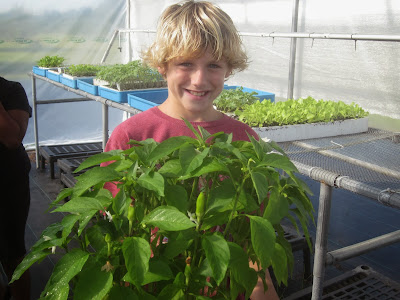WELLNESS WEDNESDAYS
"Education is the most powerful weapon you can use to change the world."
--Nelson Mandela
When it
comes to the health of our children, parents agree on one thing: we will do whatever it takes.
The Growing Healthy Kids movement is improving
parents’ knowledge about the foods to eat more of as well as the foods to eat
less of, plus the importance adding regular, healthy doses of physical fun and
fitness. Our education programs teach
kids and adults how simple it is to eat well.
We empower them with knowledge and skills to prevent high blood
pressure, diabetes, high cholesterol, obesity-related cancers and other
preventable diseases. Learning to eat
smart helps children get to – and stay
at – healthy weights. The key to our
children living lives longer than ours – not shorter - is teaching them how to
make lifelong habits of eating foods that are good for us and planning fitness
into each day to prevent obesity and obesity-related diseases.
Lessons children learn in our kitchen
classroom are what I fondly call THE RECIPE FOR GROWING HEALTHY KIDS. Here is the list of 5 essential ingredients:
PROTEIN
FACT: Kids will learn better when they start the
day with a burst of protein.
About
¼ of what we eat should be protein.
Choose to eat fish at least 2 times a week. Choose lean, low-fat proteins. Avoid or limit meats loaded with fat.
GHK
TIP: Include protein in your kids’
breakfast every day.
FATS
FACT: There are 3 kinds of fats: one is good and
two are the bad kinds of fats. Most of
the fats we eat should be the good fats.
Good
fats: unsaturated fat
Sources of unsaturated fat: nuts, fish, liquid vegetable oils, flax
seeds, avocados
Bad
fats: saturated fat and trans fats
Sources of saturated
fats: any food that comes from an animal
(meat, chicken, ice-cream, cheese, milk (except for skim milk), etc.)Sources of trans fats: look on food labels for any ingredient that
includes the words "partially hydrogenated”
GHK
TIP: Make most of your fats the “good”
kind and eat fish at least twice a week.
CARBOHYDRATES
FACT: There are good carbohydrates and bad
carbohydrates. Most of the carbs we eat
should be the good fats.
The good
carbohydrate: dietary fiber
Sources
of dietary fiber: vegetables, fruits,
beans, whole grains, lentils, split peas
Why
we need dietary fiber: Fiber is only
found in foods that come from plants. Fiber
is what fills us up. Aim for 28-35 grams
of dietary fiber a day. Most children
(and adults) eat far less dietary fiber than their bodies need.
The bad
carbohydrate: sugar
Sources of sugar:
sodas, candy, processed foods, most breakfast cereals, energy drinks,
fruit juices.
GHK TIP: Choose breads and pastas that have “4 or more”
grams of dietary fiber per slice or per serving. Check the Nutrition Facts label and limit
foods that have more than 5 grams of sugar per serving. Learn the difference between good and bad carbs and use this knowledge when you and your kids are grocery shopping.
WATER
FACT: Water is the fluid we need to drink the most
of. Most people drink far less water
than they need. Drink water, not
soda. Aim for 8 glasses of water a
day.
SLEEP
Did you know that getting
enough sleep is key to losing weight and staying at a healthy weight? Provide guidance for your children so they
have a regular bedtime to ensure they are getting plenty of sleep every night.
GHK TIP: Establish “sleep hygiene” habits such as
turning off the TV, the computer, cell phones, and other electronics at least an hour before bedtime and
not drinking caffeinated drinks in the evening to wake up feeling
refreshed every morning.
From our expanding recipe collection from the Growing Healthy Kids' Test Kitchen, I am happy to share this amazing variation on a traditional pesto recipe. It features walnuts, a great source of good fats and omega-3s, and parsley, which has incredible benefits as an anti-inflammatory.
GROWING
HEALTHY KIDS: Our Recipe Collection
WALNUT
PESTO
INGREDIENTS:
- ·
1-1/2 cups walnuts
- ·
2 garlic cloves, finely chopped
- ·
Crushed red pepper
- ·
Sea salt
- ·
¼ cup minced flat-leaf parsley
- ·
½ cup EVOO*
- ·
½ cup freshly grated Parmesan cheese
DIRECTIONS:
Preheat oven to 350.
Spread walnuts on a baking sheet and toast for 12 minutes, or until
golden. Cool the walnuts and finely
chop.
In a mortar, mash the garlic with a pinch each of
crushed red pepper and salt until a paste forms. Add the walnuts and parsley and pound to a
coarse paste. Slowly add the olive oil,
pounding and stirring until blended.
Stir in the Parmesan and season with salt. Serve over roasted vegetables or whole grain pasta.
NOTE: You can
also make this in a food processor, quickly pulsing the ingredients.
*Extra virgin olive oil
Education IS the most important weapon we can use to change the world. Start with your own world and educate yourself family about the importance of reading food labels to identify foods containing the good carbs and good fats. Include some protein in your children's breakfasts every morning. Every child deserves access to healthy foods and daily activity, beginning with YOUR children.
In
gratitude,
Nancy
Heinrich
Growing
Healthy Kids





































